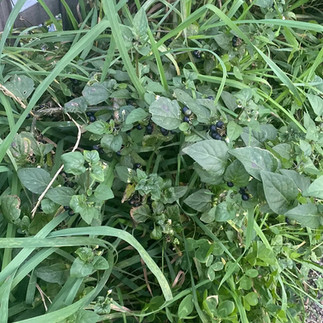Week Two: Creative Health
- Gina Mollett
- Oct 5
- 3 min read
This week I have started a short course in Creative Health and Wellbeing through Artmaking at UAL, led by R.M. Sánchez-Camus. One of my favourite activities was mark making to music, and thinking about our associations to colour and line. I think alot about the type of materials that we use when making artworks and how these alone can be therapeutic, regardless of what the marks we make may look like.

I've also started to read a couple of books to ground myself in some theory and best practice within Arts and Health. It has been interesting to read about the use of the arts within medical school teaching and how this can bring humanity to medical practice. Within my role as a Social Prescriber I am often working alongside clinical and non-clinical staff within Primary Care and I'm left questioning how the arts could be used not only to support their wellbeing but also to deepen their empathy and understanding of mental health conditions. I am also reflecting on my previous work within the arts and cultural sector and some of my favourite projects that have brought together students from the arts and the sciences. I wonder what might happen if we were to bring together art school and medical school students to explore the subject of Arts and Health? How might I approach the curation of an arts programme for medical students? How might the arts aid a person in their interactions with mental health services when they are struggling to find the words to describe their experiences? What would happen if a mental health nurse were to prescribe patients with a sketchbook and art materials to communicate their experiences?
"One domain that the arts may particularly nurture is the development of empathetic skills. Empathy has been shown to be of considerable importance in medical practice, for example to aid effective communication. Paintings, novels, film and drama can absorb us and bring us to tears of joy or sorrow. Such media facilitate entry into the worlds of others, to experience it and imagine it. Students with limited life experience can utilise the arts to imagine life from another's perspective." Victoria Tischler, Mental Health, Psychiatry and the Arts (2010)

I am reflecting on the structure of Arts and Health programmes, with a particular focus on how we approach beginnings and endings. I've always felt that relationships are key to any arts project. What can support a participant to make that initial mark on a piece of paper? What can support a participant to continue making those marks beyond the end of a project? I read that the climax of a project should not come at the very end, and that a project that sits with pain should not inflict any additional suffering. I'm thinking about the marks we make and how they are individual to us. What could the marks we make say about our unconscious minds?
"The wonderful beauty of the arts, in all forms, is that human emotion is involved in a raw and uncensored manner. Feelings flowing are essential for artistic experience. The professional artist and the inexperienced participant have in common the fact of being at their best as creators of visual imagery by their capacity to tap the unconscious and, as a result, to present in line, colour and form a mark that is individually their own, unable to be produced by any other individual in exactly the same way, ever." Roberta Nadeau, Using the Creative Arts in Therapy and Healthcare (2008)

Whilst I've not been foraging this week, I have been walking along the Erewash Canal as the sun sets in the evening. As the moon has been rising in the sky I've been reflecting on the time of day and how this could impact the mood or feeling of a Creative Health workshop that connects to the cycles of nature. I've also been looking out for new things to forage and have been using the PictureThis plant ID app to discover the plant life that sits along the canal. Below are toxic berries that I will not be using!! Black nightshade, coralberry and jasmine. I've been learning about how important it is to ID plants before experimenting with natural colour as they could irritate the skin, have toxic fumes and be deadly poisonous.








